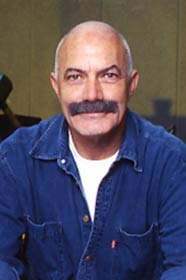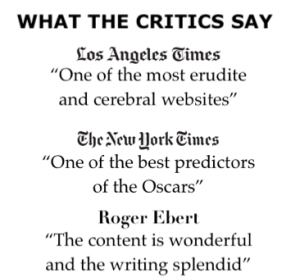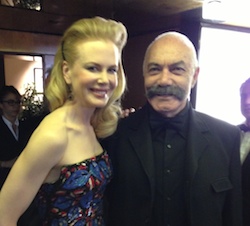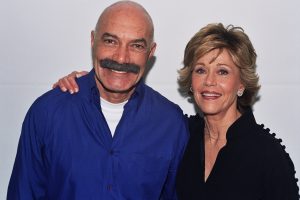Thirty years after his Oscar-winning hit, the filmmaker looks at the context that led to his most memorable creative choices.

Why they don’t make movies like The Fugitive anymore? For director Andrew Davis, the decrease in crime dramas and thrillers geared toward grown-ups dates back further than the blockbuster craze of the past two decades.
With the film, which turned 30, Davis accomplished the feat of being both a commercial and critical success, with 7 Oscar nominations and one win for Tommy Lee Jones as best supporting actor.
The Harrison Ford-starring vehicle that reimagined the 1963 TV series didn’t set out to be the third-highest-grossing film of 1993 or an awards winner.
“Barry Reardon, head of distribution at Warner, said, ‘Can you get this thing out by August 6th?’” Davis recalls. “There were six editors, but three main editors, and I would go from room to room. It was almost like a dentist’s office where I would check in on each patient … And everybody hated us afterwards, because, ‘Well, if The Fugitive did it in 10 weeks, why can’t you do it in 10 weeks?’ When we showed the film to the studio, they said, ‘Don’t touch a thing. We love it.’”
Harrison Ford
We knew we only had one shot of the train crash and only one shot to shave off the beard in that same scrambled eggs sequence. So there was a question of how to stage it so he could be hidden behind the bathroom door, and it’s funny, because when the nurse comes in to fill up the water bottle, you can see the paper towel still fluttering from him closing the door. So he’s glad she didn’t catch that. That was one of the few things we shot in North Carolina besides the train crash, and Harrison was really on his game. That was also the day he shot himself with a needle in order to get rid of the infection from his wound.

The Fugitive as a St. Patrick’s Day movie
I wanted to put the St. Patrick’s Day parade in my first movie, Stony Island. But I couldn’t do it because Mayor Richard J. Daley died, and so I shot his funeral instead. Now, [on The Fugitive], we had a chase through City Hall, and I couldn’t have it end just with Tommy Lee Jones’ Gerard going, “Oh my God, he got away.” I had to continue the sequence, and we couldn’t do a French Connection car chase. I knew that the St. Patrick’s Day parade was coming and that it would be a perfect and wonderful way to get lost in the fabric of Chicago. We then got the Plumber’s Union to agree to let us get involved in it, and I don’t think the city really knew what we were doing. We were so invisible. We had a Steadicam and cameras hidden here and there, so we just joined the crowd and Harrison grabbed a hat and put it on. It was very, very much of the moment and also very cold. I love the fact that Harrison walks off into the crowd and then the camera pans back to Tommy jumping up and down, still looking for him.
That masked surgery scene was actually shot before he shaved his beard. Jeroen Krabbé’s part was originally Richard Jordan’s, but he got sick and had to leave the film. So we had to reshoot those few scenes, and there’s one shot in the movie where Harrison does have a phony beard in order to connect Jeroen Krabbé’s new version of the character. But that was it.

Ten weeks of postproduction
It was to have those last couple weeks of summer before school started and to have a window into the fall. The picture played from August till December, which is unheard of today. Barry Reardon, who was the head of distribution at Warner, said, “Can you get this thing out by August 6th?” So we went to work, and it was amazing. There were six editors, but three main editors, and I would go from room to room. It was almost like a dentist’s office where I would check in on each patient, and [co-producer] Peter MacGregor-Scott was a wizard of postproduction. So while we were cutting, we were also dubbing and looping and doing all kinds of stuff at the same time. And everybody hated us afterwards, because, “Well, if The Fugitive did it in 10 weeks, why can’t you do it in 10 weeks?” When we showed the film to the studio, they went, “Don’t touch a thing. We love it.” We still made 1,500 changes after that, just little trims and things, but we worked on it up to the last minute.
Some of the most interesting things I’ve done have been under pressure, and I know that there are a lot of artists like that. Whether they’re composers or writers, they need a kind of pressure on them. I don’t want to work like that all the time, but what’s really rewarding is having an idea in your head about how you want things to look and feel, and then pulling it off. You go, “Wow, we really did that.” The Fugitive is a whole array of that. All these people came together and did such a great job. I was really blessed with an incredible cast and crew.
Why don’t they make films like The Fugitive anymore?
But I think it started with Jaws. When you could make a movie that could play all over the world and have all of these incredible box offices, studios wanted to invest in that home run all the time. But Bob Daly and [WB co-chairman] Terry Semel said, “We’re happy hitting doubles.” They still had Batman [1989] and some other big hits. So they knew this was going to be a popular movie, but they didn’t know it was going to be this popular. I remember Daly saying to me, “It’s rare that we have a box office this healthy, reviews this healthy and all these nominations.” It was very rare for them to have all of those things happening at once.

Successful collaboration with Tommy Lee Jones
Respect and not being afraid of what he has to contribute. If you give Tommy the space to participate as a creative soul, it’s going to be better than trying to say, “No, don’t do that, don’t do this.” He’s contributed so much in all of my movies, and having the ability as a director to step back and let actors feel the moment is something I learned from Gene Hackman. I was a young director when I did The Package, and I had to learn to give him space to find where he was at with a scene before I jumped in. And Tommy just has an incredible range. Look at his films, they’re mind-boggling. And Harrison, too. He’s such a pro. He’s been on so many sets with so many interesting directors, and he likes the process.
Celebration with a new 4K
The 4K Blu-ray looks better than any time you’ll ever see it in the theater. The quality is better than what you can project in a movie theater.











